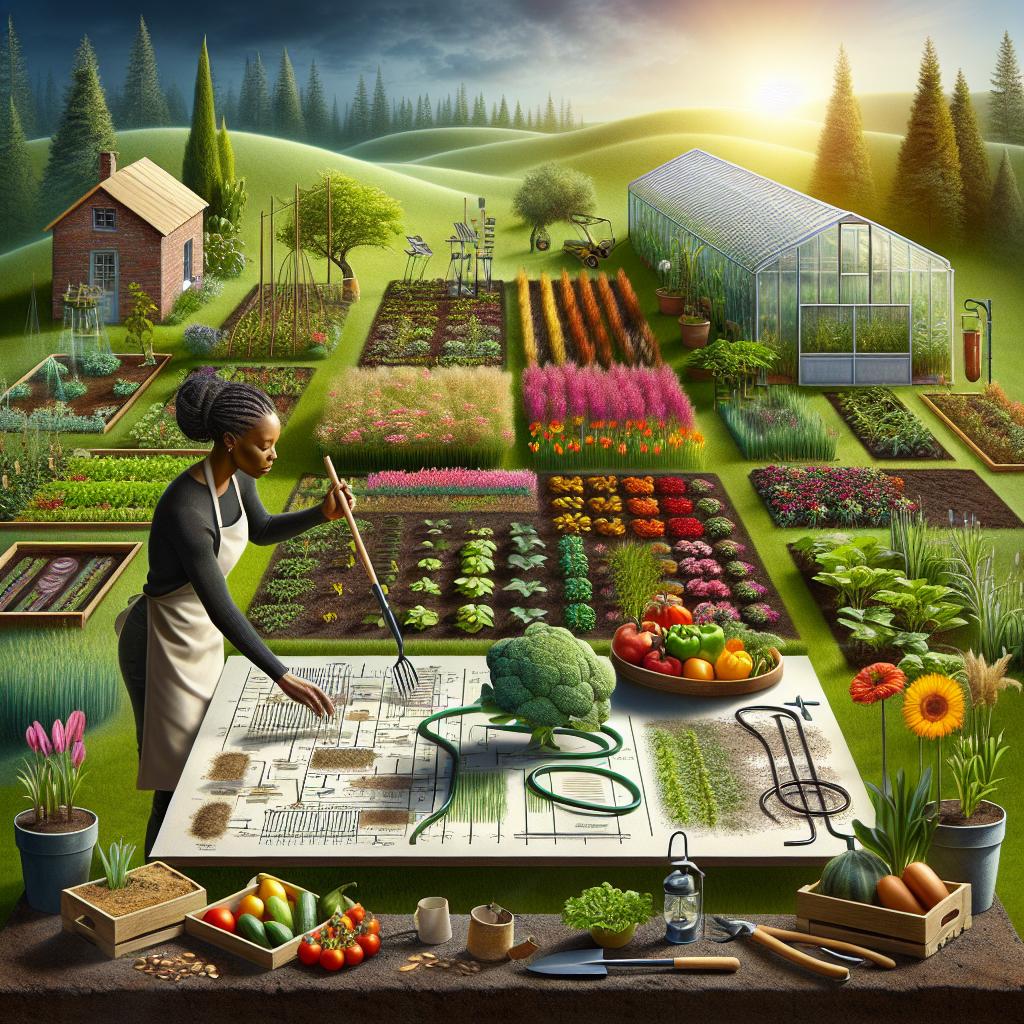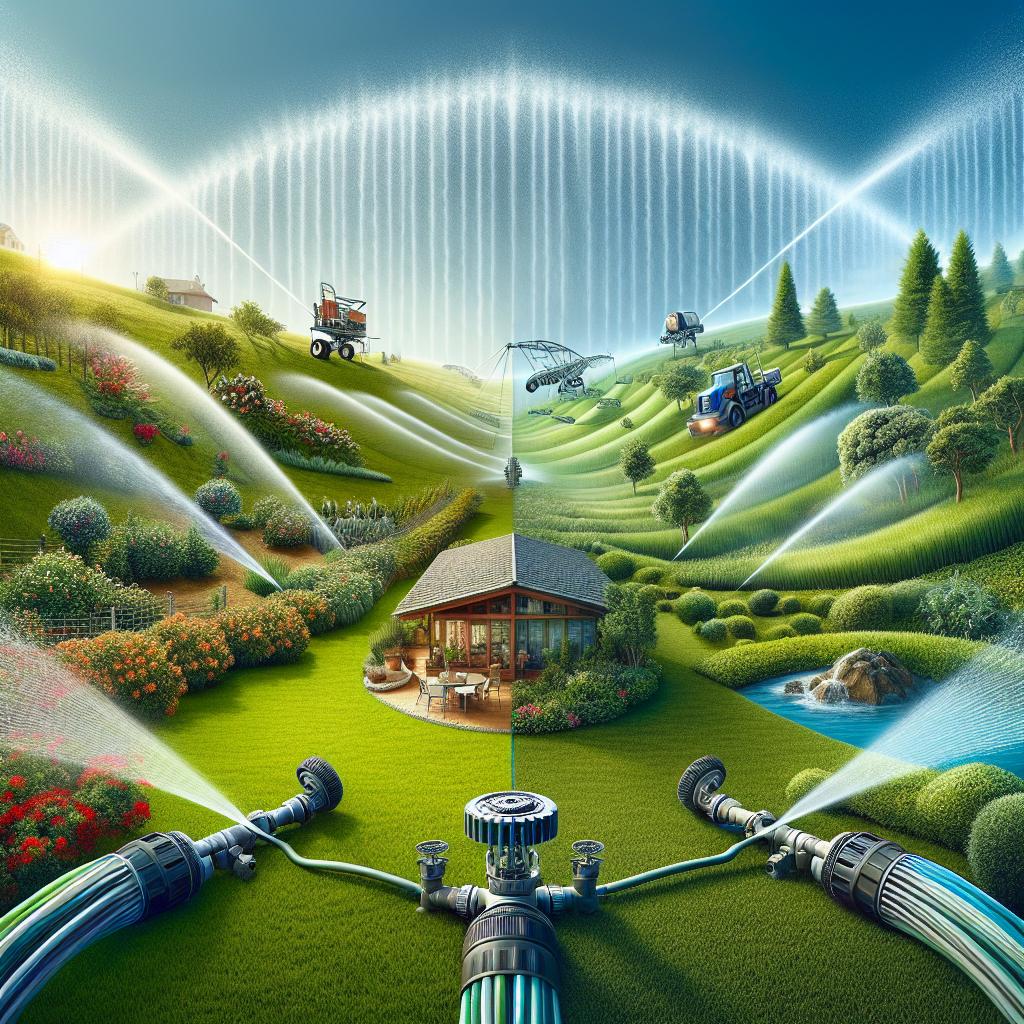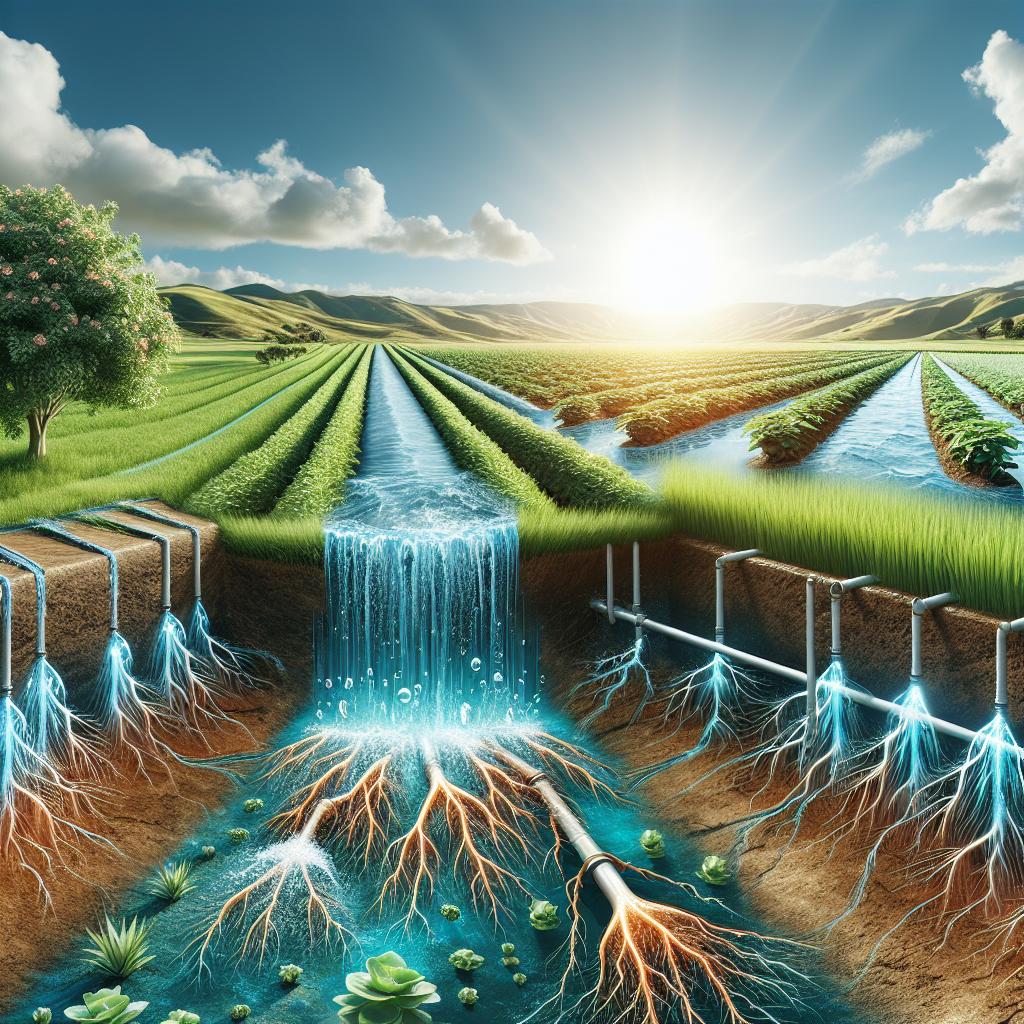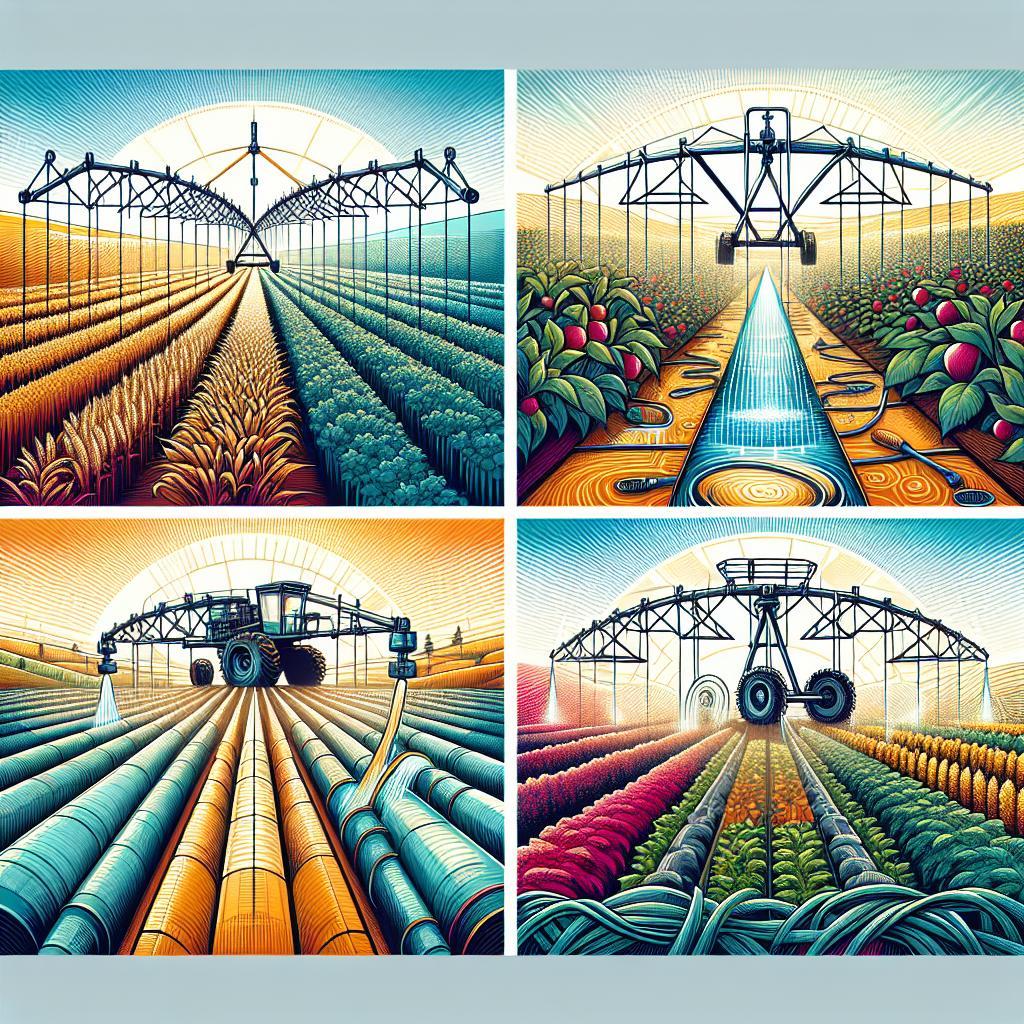This post may contain affiliate links which means I may receive a commission for purchases made through links. Learn more on my Private Policy page.
unlocking the Secrets of Soil: Exploring Common Types of Irrigation Systems and Their Applications
Welcome to the wonderful world of irrigation,where the art of nurturing nature meets the science of water management! Whether you’re a budding gardener,a seasoned farmer,or simply someone with a green thumb,understanding the various types of irrigation systems can be the key to cultivating thriving plants and bountiful harvests. Picture this: a meticulously designed network of pipes, tubes, and sprinklers—each serving a unique purpose, delivering just the right amount of moisture to help your plants flourish. In this article, we’ll explore the most common irrigation systems, from the classic charm of surface irrigation to the sleek efficiency of drip systems. Join us on this journey to discover how these innovative techniques not only support crop health but also promote sustainable practices in the ever-crucial quest for water conservation. So grab your favorite gardening gloves, and let’s dig into the diverse landscape of irrigation methods and their applications!
Exploring the Essentials of drip Irrigation for Efficient Water Use
Drip irrigation is hailed as one of the most efficient methods for delivering water directly to the plant roots, minimizing waste and maximizing efficacy. This system works by utilizing a network of pipes, tubing, and emitters to provide a slow and steady supply of moisture, ensuring that plants receive the precise amount of water they need without excess runoff. The key benefits of drip irrigation include:
- Water conservation: Allows for targeted watering, reducing overall water consumption.
- Soil Health: Prevents erosion and minimizes weed growth by keeping the soil surface dry.
- Versatility: Suitable for a wide variety of crops, from vegetables to orchards.
In addition to being eco-friendly, drip irrigation systems can be tailored to different agricultural needs, offering customizable options for growers. Components such as filters, pressure regulators, and emitters can be selected based on the scale of operation and the specific requirements of various crops. Here’s a brief overview of the typical components used in drip irrigation:
| Component | Function |
|---|---|
| Emitter | Delivers water at a controlled rate to the plant roots. |
| Mainline | Transports water from the source to the sub-main lines. |
| Sub-main | Branches from the mainline to deliver water to various zones. |

Unleashing the Power of Sprinkler Systems: Versatile Options for Every Landscape
When it comes to nurturing vibrant landscapes,sprinkler systems stand out for their versatility and effectiveness. Homeowners and landscapers alike can choose from a variety of systems tailored to the specific needs of their gardens, lawns, and crops. Rotary sprinklers, for instance, are perfect for larger areas, allowing for efficient water distribution through rotating nozzles that cover a wide radius. On the other hand, oscillating sprinklers provide gentle irrigation for delicate flower beds, moving back and forth to ensure even coverage. Both options can be manually adjusted for various spray patterns and distances, ensuring that every corner of your garden receives the hydration it needs to thrive.
For a more integrated approach, drip irrigation systems excel in delivering water directly to the plant roots, reducing wastage and promoting healthy growth.They are especially beneficial for vegetable gardens and perennial flower beds, where precise watering is essential. Additionally, soaker hoses offer a simple solution for maintaining moisture in established plantings without the fuss of complex setups. With options like these, it’s easy to find the perfect sprinkler system for your unique landscape challenges. Here’s a quick comparison of the popular types of sprinkler systems:
| Type | Best For | Coverage Area | Water Efficiency |
|---|---|---|---|
| Rotary Sprinklers | Large Lawns | Up to 50 ft radius | Moderate |
| Oscillating Sprinklers | Flower Beds | Up to 35 ft width | High |
| Drip Irrigation | Vegetable gardens | Localized | Very High |
| Soaker Hoses | Established Plantings | Variable | High |

Navigating the Benefits of Surface irrigation: A Deep Dive into Traditional Methods
Surface irrigation, one of the oldest forms of watering crops, draws on natural topography to effectively deliver water to fields. This method can take various shapes, each suited for specific landscapes and crop types.Some prominent traditional methods include:
- Flood Irrigation: Water is allowed to flow over the fields, saturating the soil and reaching the crops effectively.
- Furrow Irrigation: Instead of flooding entire fields, water is channeled through small furrows, allowing better control and minimizing waste.
- Basin Irrigation: Enclosed basins are filled with water, creating a localized water source for crops, perfect for orchards and tree plantations.
While modern techniques like drip or sprinkler systems are gaining popularity, surface irrigation remains a cost-effective and straightforward approach, particularly in rural areas.It’s benefits extend beyond water management,affecting soil health and crop yield positively. Key advantages include:
- Minimal Infrastructure Costs: Surface irrigation requires less investment in complex systems, making it accessible for small farmers.
- Natural Resource Optimization: By harnessing gravity and rainfall, it conserves energy and reduces reliance on pumps.
- Soil Benefits: The slow infiltration promotes deep root growth and enhances soil structure,contributing to long-term sustainability.
| Method | Best Suited For | Efficiency |
|---|---|---|
| Flood Irrigation | Paddy fields, low-lying crops | 60-70% |
| Furrow Irrigation | Crops in rows like corn, beans | 70-80% |
| Basin Irrigation | Orchards, ornamental plants | 70-75% |
Choosing the Right System: Tailored Solutions for Your Unique Gardening Needs
Every garden has its own personality, which means that a one-size-fits-all approach to irrigation simply won’t cut it. Selecting the right irrigation system requires a keen understanding of your garden’s specific needs, such as plant types, soil composition, and weather patterns. As an exmaple, while drip irrigation is fantastic for vegetable gardens due to its efficiency in water delivery directly to the roots, sprinkler systems may be better suited for larger lawns and flower beds, providing broader coverage with ease. Assessing these factors will not only enhance your garden’s health but also conserve precious water resources.
Additionally, consider how you want to manage and maintain your garden. Automated systems, such as smart irrigation controllers, can be programmed to adjust watering schedules based on local weather forecasts, ensuring that your plants get the care they need without excessive water waste. On the other hand, if you’re looking for a more hands-on approach, soaker hoses offer an affordable and flexible solution, allowing you to tailor water request on a smaller scale. By understanding the different systems available and matching them to your gardening goals, you can create a thriving, sustainable landscape that reflects your personal touch.
Wrapping Up
As we draw the curtains on our exploration of common types of irrigation systems and their diverse applications, it’s clear that the heartbeat of agriculture and gardening lies in the careful orchestration of water. Just as a skilled conductor harmonizes an orchestra, the right irrigation system can transform a dry landscape into a flourishing oasis. Whether you’re a seasoned farmer, a home gardener, or someone just curious about the wonders of watering, understanding these systems opens up a world of possibilities for nurturing life.
Remember, each system—from the intricacies of drip irrigation to the expansive embrace of center pivots—has its own unique benefits, challenges, and best uses.your choice will not only affect your crops or plants but also contribute to sustainable practices in our ever-evolving relationship with Mother Nature.
As you embark on your irrigation journey, don’t be afraid to experiment and adapt. Nature is resilient, and with a little care and knowledge, so can you be. So, grab your hose, set up that drip line, or let the rain barrels fill, and watch as your green dreams come to life, one drop at a time. Happy watering!
This post may contain affiliate links which means I may receive a commission for purchases made through links. Learn more on my Private Policy page.

